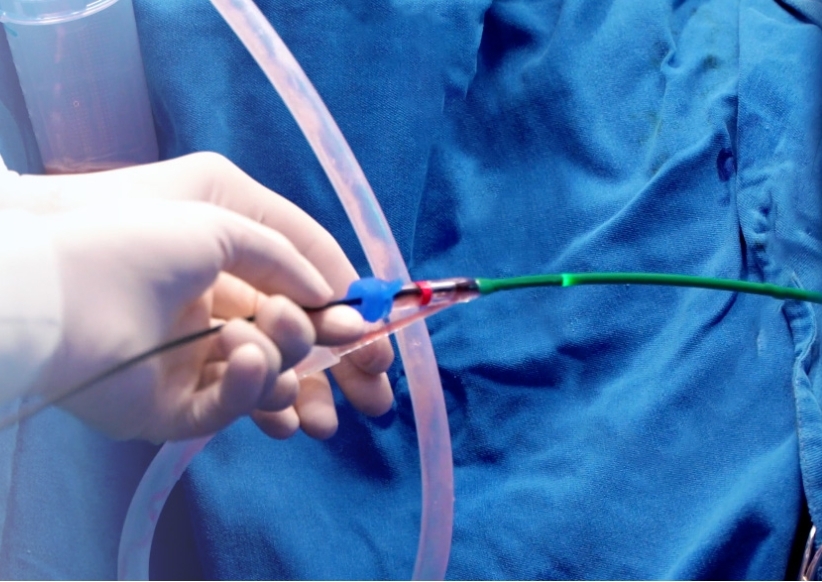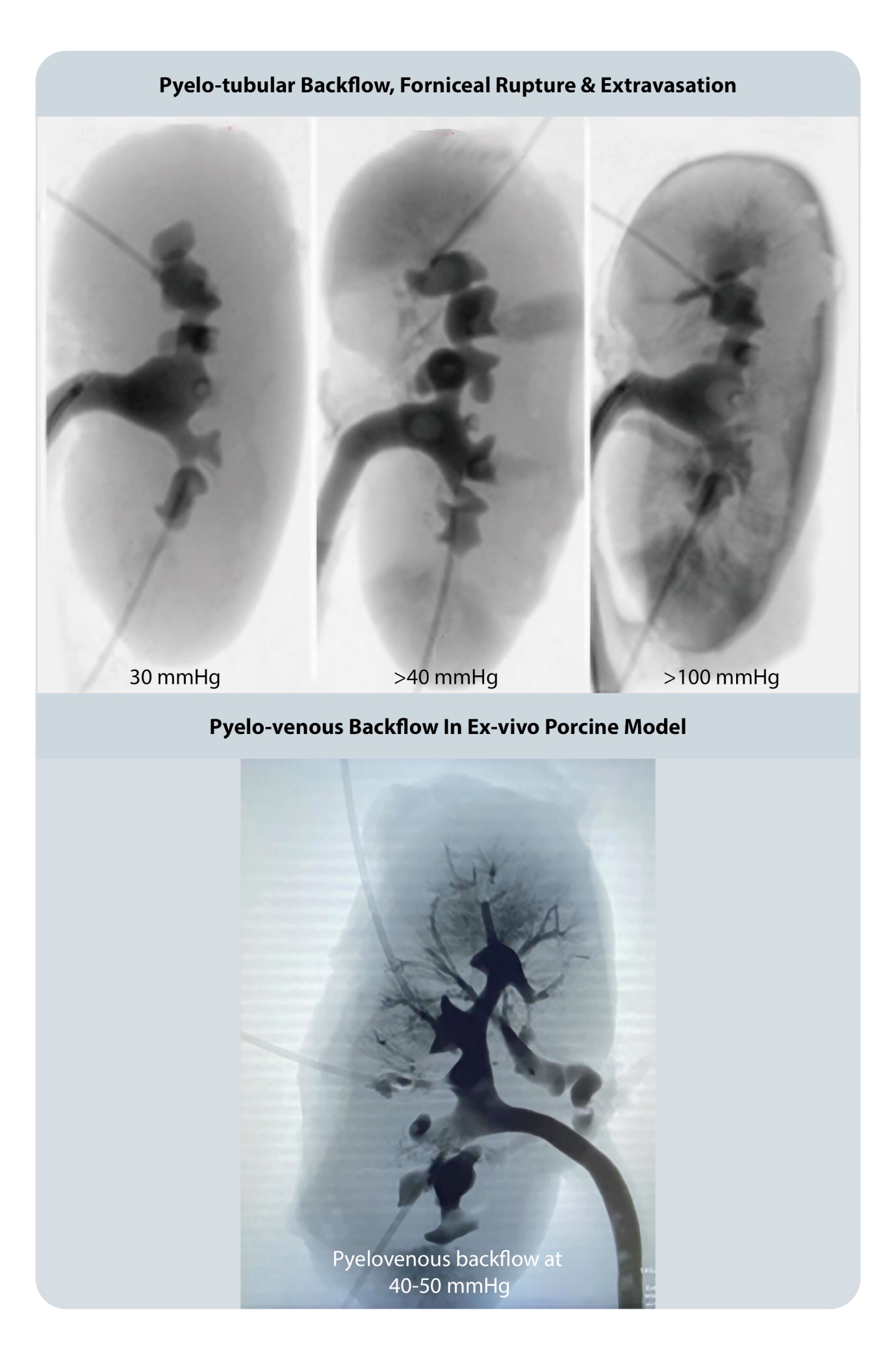Ureteral access sheaths brought in use by urologists provide access to the upper urinary tract during ureteroscopy. It aids in minimizing damage caused to the ureter by facilitating repeated passage for stone removal. In modern procedures, ureteral access sheaths have enhanced efficiency by avoiding the need for repeated introduction of guide wires.
The ongoing research and development around ureteral access sheath aims to improve its function and design. Exhaustive research has been conducted to investigate the relationship between irrigation rate and intrarenal pressure.

Research overwhelmingly focuses on the effect of irrigation rate on intrarenal pressure.
Wenfeng Guan(2023) conducted a preliminary study on ten freshly harvested porcine kidneys, focusing on the flexible ureteroscopes and ureteral access sheaths[1]. The experiment recorded the effects of irrigation flow rates on intrarenal pressure using different sizes of flexible ureteroscopy in different sizes and functions of ureteral access sheaths.
The study shows that higher irrigation rates potentially lead to increased intrarenal pressures.
The researches also demonstrate increased internal pressures in the procedures conducted using ureteral access sheaths compared to those undertaken without ureteral access sheaths. While a higher irrigation rate has its advantages, it has to be taken into critical consideration before using a ureteral access sheath for ureteroscopy.
The need for high irrigation rates is undeniable in ureteroscopy for the following benefits:
● Visualization: The higher the irrigation rate, the clearer the operative field. Flushing out blood at a higher rate enhances the visualization for the surgeon.
● Stone Fragment Removal: Higher irrigation rates provide steadier removal of stone fragments from the renal pelvis and ureter.
● Operative Time: A higher rate means quicker treatment of targeted areas. This reduces the overall duration of the operative time.
● Temperature: High irrigation rates can also help to lower the temperature caused by laser lithotripsy, which is beneficial for preventing thermal injury to the renal tissue during the procedure.
However, as the current study demonstrates, high irrigation rates always increase intraluminal pressure.
Management of irrigation rate and intrarenal pressure remains a concern. Understanding these risks and careful consideration of individual medical factors can be weighed in to draft successful strategies for the procedure.
Some adverse effects of high irrigation rates are:
●Increased Intrarenal Pressure: The higher irrigation rate leads to increased intrarenal pressure, which further creates complications. A ≥30-35 mmHg intra-renal pressure generally results in pyelo-sinus, sepsis, urinary tract infections, and venous and tubular backflow. Lower intrarenal pressure is crucial in flexible ureteroscopy.
● Renal Damage: Prolonged high pressure means damage to delicate renal tissues. It may even lead to long-term kidney impairments.
● Ureteral Trauma: High irrigation may potentially strain the ureter. It can lead to ureteral edema, stricture formation, or perforation.

It is to be noted that irrigation rate and intrarenal pressure have to be balanced. Though it is a nuanced task, more optimal devices with careful strategies can be used to achieve the desirable conditions for procedures involving the use of access sheaths.
High irrigation rates can be actively managed and risks of increased intrarenal pressure can be mitigated by the use of an access sheath designed for this purpose. One notable company offering such a device is Well Lead Medical.
ClearPetra® by Well Lead Medical is specifically designed to balance the flow and pressure during ureteroscopy. They have comprehensive products available in different sizes, features, and designs with distinctive mechanisms. Each ureteral access sheath size is meant to serve a distinctive purpose.
Some notable features of ClearPeta® are a high stone clearance rate, high surgical efficiency, reduced retropulsion, and improved visual field as a result of continuous pulverization.
The ClearPetra® products have the designs and mechanisms to allow low pressure and temperature. The 45°oblique branch to the main sheath enables them to be connected to a suction apparatus, and the pressure vent on the oblique allows the adjustment of suction pressure. These products effectively minimize ureteral damage and reduce post-surgery risks. Their use brings the advantages of a high irrigation rate while eliminating risks associated with it.
The use of ureteral access sheath is undoubtedly a revolutionary advancement in ureteroscopy procedure. Once the irrigation rate can be better balanced with intrarenal pressure, many complications can be avoided while increasing efficiency. The advanced ClearPetra® devices address these challenges effectively.
[1] The effect of irrigation rate on intrarenal pressure in an ex vivo porcine kidney model-preliminary study with different flexible ureteroscopes and ureteral access sheaths. Available at: https://pubmed.ncbi.nlm.nih.gov/36757468/ (Accessed: 10 July 2024)